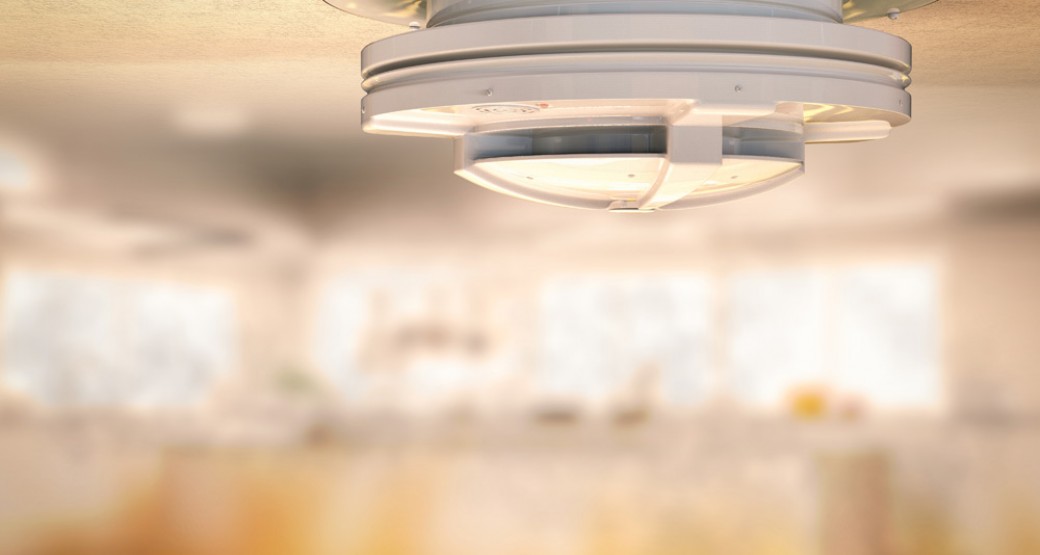Do you know how to prevent carbon monoxide? Part of a comprehensive home security system is having functional smoke detectors to monitor for fire, as well as carbon monoxide detectors. The latter is particularly important and something that many homeowners overlook.
Fire is a concrete danger that we can see and feel; it damages belongings. Carbon monoxide, meanwhile, is known as “the silent shadow” because it’s colorless, odorless, and tasteless. This invisible gas is incredibly dangerous, though, because it can cause flu-like symptoms and even death.
Where Does Carbon Monoxide Come From?
Many people aren’t aware of the dangers that carbon monoxide poses, and this is unfortunate because it can be emitted from a huge variety of common sources. Carbon monoxide sources include:
- Exhaust from automobiles
- Using gas appliances or heaters in small or enclosed spaces
- Improper burning of natural gas or fuels such as charcoal, coal, wood, propane, gasoline, or kerosene
- Heaters and furnaces that lack proper venting
- Faulty space heaters or central heating systems
- Ventilation blockages in enclosed spaces where fuel is burned (kitchens or fireplaces)
What Are the Common Symptoms of Carbon Monoxide Poisoning?
One of the most dangerous factors is that carbon monoxide can cause extremely vague symptoms that can be tough to pinpoint. The symptoms can vary in specificity and severity from one person to another, and may include:
- Shortness of breath
- Nausea and/or vomiting
- Red coloration of the skin
- Headache
- Fatigue
- Dizziness
- Light-headedness
- Weakness
- Muscle fatigue, as well as general fatigue
- Chest pain
- Loss of consciousness
It’s important to know the signs of carbon monoxide poisoning, but it’s even more important to prevent it in the first place.
How to Prevent Carbon Monoxide Poisoning
The best step in carbon monoxide safety is to install a fire detection system that also includes quality carbon monoxide detectors. You should ensure that all of your detectors — both fire and carbon monoxide — are connected into your home security system and that your system is actively being monitored by security experts.
The next step is knowing how to prevent carbon monoxide from entering your home in the first place. Maintenance is key when it comes to carbon monoxide prevention. You must check or replace detector batteries every spring and fall. Do it when you change the time on your clocks forward each spring and back each fall and you’ll keep on track.
Also, keep your home properly maintained. Call a qualified technician out each year to check your heating system, hot water heater, as well as any appliances that burn gas, oil, or coal.
Next, comes a series of “don’ts.” Don’t use a generator, charcoal grill, camp stove, or any sort of gasoline or charcoal-burning device inside your home, basement, or garage – not even if you’re using them near an open window. Don’t run a car or truck inside a garage that’s attached to a house. Even if you leave the garage door open, the carbon monoxide fumes can seep into your home. Don’t burn anything in a stove or a fireplace that isn’t properly vented. Finally, don’t heat your home with a gas oven.
What Do I Do If I Suspect a Carbon Monoxide Leak?
If your carbon monoxide detector sounds or someone in your home begins to experience symptoms that cause you to suspect a carbon monoxide leak, the first thing you need to do is get everyone out of the house. This is a situation where having an emergency evacuation plan for your family is helpful because everyone will know where to meet outside your home and you’ll know that everyone is accounted for.
Because carbon monoxide is odorless, people often take a lackadaisical attitude towards it. Make no mistake — a strong buildup of carbon monoxide can kill very quickly, so experts suggest that you treat it as you would a fire and leave quickly. Don’t waste time packing belongings. As you leave the home, open any doors and windows you can along the way. Take your pets with you, as they are also susceptible to carbon monoxide poisoning.
Once you’re outside the home, call the fire department. If your carbon monoxide detector is wired in and being monitored by a professional security company, rescuers may already be on the way. Emergency personnel will have the proper equipment to enter the home safely and conduct checks to determine the source of the leak.
If you, a family member, or a pet is showing symptoms of carbon monoxide poisoning, be sure to head to the hospital or vet to get checked out and be treated. After your home has been deemed safe, you’ll likely need to have service technicians come out to check any faulty appliances that may have caused the leak.
By educating yourself and installing the proper detectors and monitoring system, you can avoid the inconvenience of a minor carbon monoxide leak, as well as the potential disaster of a major one.
At ProTech Security, we have a strong history of experience, innovation, and customer service. The ProTech Security Advantage is more than 30 years of service in Northeast Ohio and a strong commitment to providing quality, cost-effective protection for homes, businesses, educational institutions and government facilities. To see what ProTech Security can do for you, contact us today.




